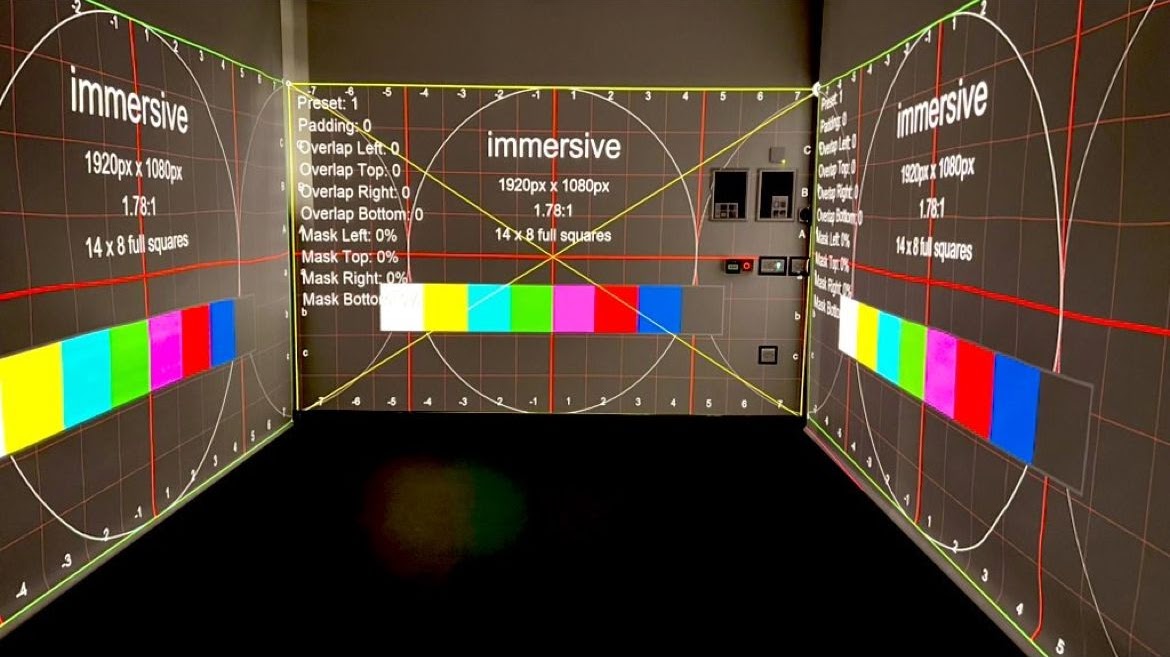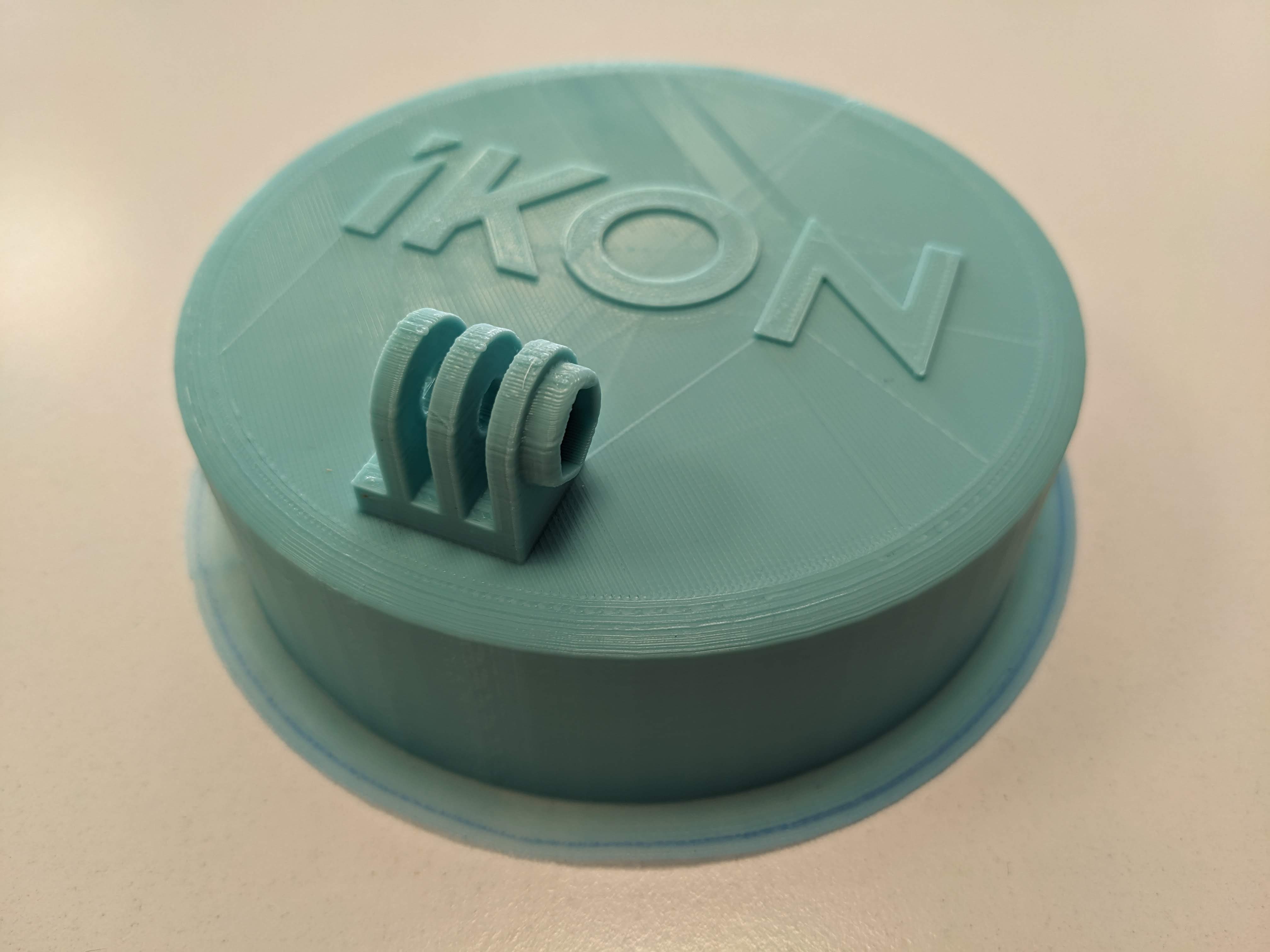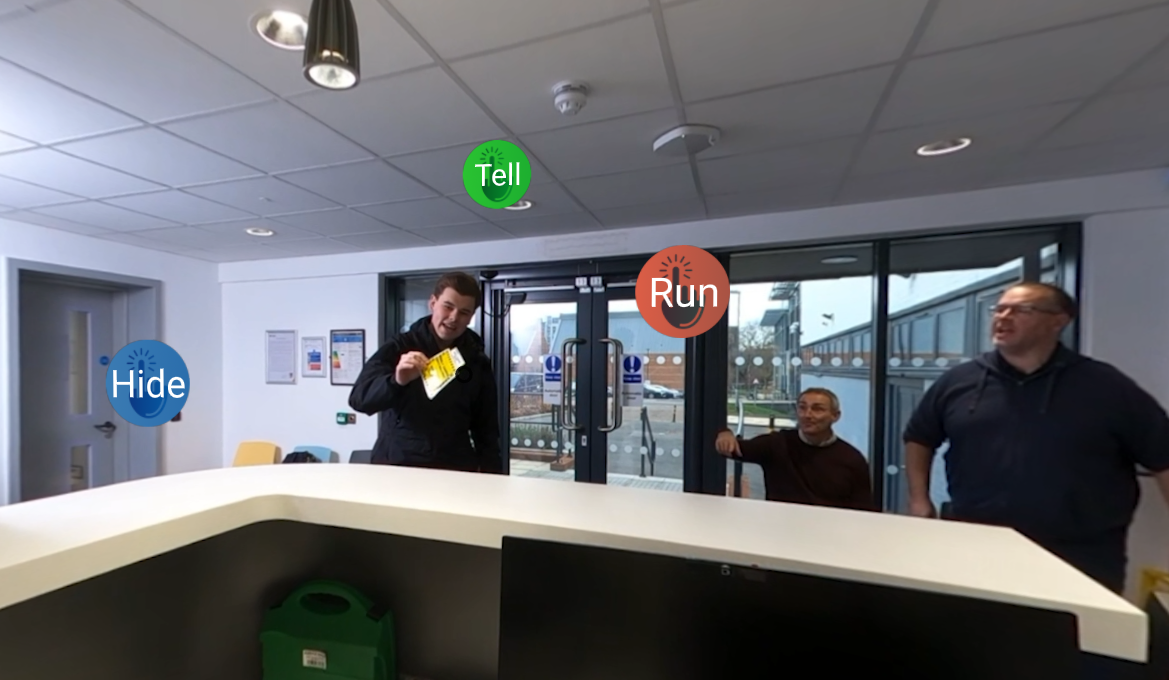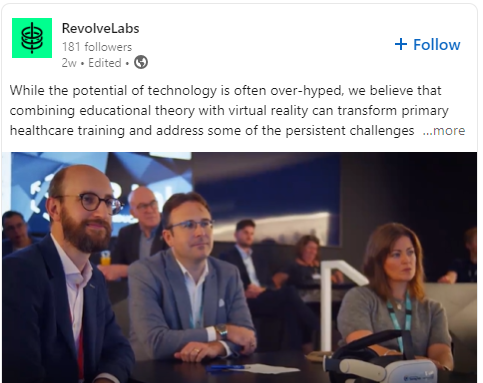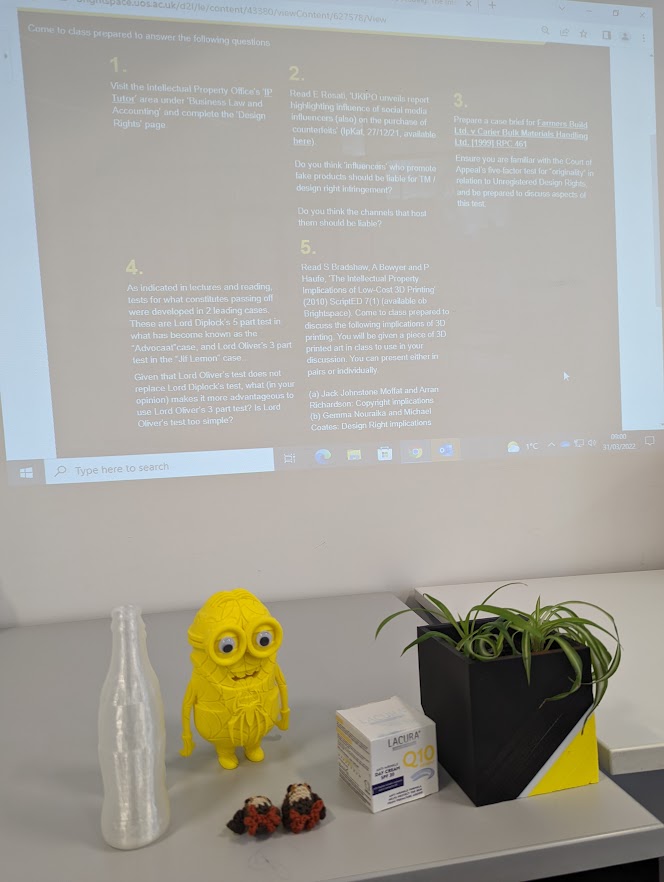Specialist Areas
My reflections and experiences in developing immersive learning experiences as part of IKON Training's Empowering eLearning Plan.
Specialist Area 1: Developing Immersive Learning Experiences
As part of the Empowering eLearning Plan at IKON Training, I spearheaded the development of immersive learning experiences. This innovative approach involved trying to make use of advanced technologies such as Virtual Reality (VR) and Augmented Reality (AR) to create engaging, interactive, and impactful learning environments. By integrating these technologies, we aimed to enhance learner engagement and retention, while also providing realistic training scenarios to practice vital skills in a safe environment.
The rationale behind this project stemmed from the recognition that traditional learning methods, especially in mandatory training, could benefit from the increased engagement and realism offered by immersive technologies. According to literature in the field, VR technologies have been proven to provide experiential learning opportunities, offering learners a chance to apply theoretical knowledge in practical, controlled settings. This aligns with Kolb's Experiential Learning Cycle, where immersive simulations facilitate the concrete experience and reflective observation phases of learning.
First Experiences in VR
My introduction to creating immersive learning experiences came during a collaboration with an expert from BT, where we developed a 360-degree video tour of the school where I worked. Although I was not proficient with the video creation software at the time, I actively participated in shaping the project by working closely with the expert on scripting the content and ensuring the video created an immersive experience for viewers. This project taught me a great deal about the practical aspects of designing for VR, particularly how important it is to carefully plan locations, actions, and interactions to make the most of the VR environment.
One of the most engaging elements we designed was a sequence where students passed a ball around the camera, allowing the viewer to feel immersed in the action. This type of interaction helped bring the learning environment to life and allowed viewers to feel as if they were part of the school community. We also considered the practicalities of viewing the video in full VR, so we provided swivel chairs to allow participants to easily turn and follow the action, ensuring they could fully engage with the 360-degree environment without physical limitations.
From this project, I learned the importance of thorough planning in VR content creation, particularly in selecting the right locations and designing actions that take advantage of the immersive experience. It also emphasised the need to focus on how learners will physically interact with the VR environment—whether in full VR with headsets or other formats—ensuring that the experience is intuitive and comfortable. This initial foray into immersive learning laid the foundation for my later work in developing more complex VR content, and it sparked my interest in exploring the full potential of VR in education.
FABiO Project
The FABiO project (Faceless Autonomous Body for Immersive Opportunities) was designed as part of the Empowering E-Learning Plan, specifically to increase the immersion of our learning experiences. By affixing a 360-degree camera to a headless mannequin, we created a perspective where learners could see a real body, helping them ground themselves within the scenario. This immersive approach aimed to allow learners to experience and practice de-escalation techniques and conflict resolution in a realistic, first-person perspective.
One of the core insights from literature on immersive learning is the importance of embodiment, where learners are more engaged when they can "inhabit" the scenario. This was the rationale for the development of FABiO. Through stakeholder engagement, we gathered feedback from learners and industry experts on this approach. The response was overwhelmingly positive, with learners expressing that the experience helped them connect theory to practice more effectively.
Interactive Content Creation
We initially set out to film VR 360-degree videos to create fully immersive experiences, aiming to bring learners closer to real-life scenarios. However, we soon realised that simply watching these videos, without the capacity to embed interactive learning points, was not sufficient to engage learners particularly when the resources would be embedded on to an online learning platform. I wanted to make these videos more interactive by adding points of interaction that allowed learners to explore key elements in the scene or receive additional information. This approach would not only immerse them visually but also engage them cognitively. This meant we had to look beyond video hosting platforms such as YouTube and Vimeo.
In exploring different options for interactive VR content, I sought to use technology that we already had access to, both to save costs and to test what could be achieved with existing tools before investing in new platforms or undergoing additional upskilling. This led me to investigate how various technologies could integrate with our existing systems, including H5P, which provided basic interactive features but lacked full VR support. I also looked at with platforms like ThingLink (as shown in the small image below), which allows the creation clickable hotspots within a 360-degree environment, adding layers of interaction for learners to engage with. This would have come at extra cost.
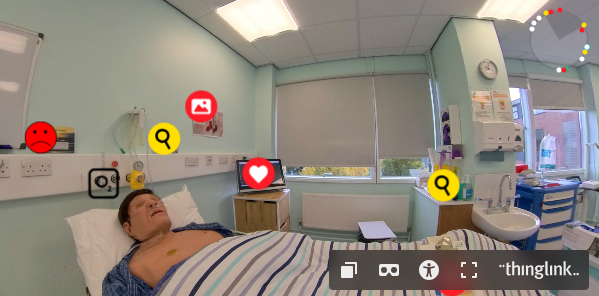
The challenge was that while H5P could offer some degree of interactivity through quizzes and embedded elements, the absence of full VR support made it difficult to fully capitalise on the 360-degree environment. This led to a compromise: rather than pursuing full VR immersion, we focused on a wide-angle approach that could be viewed across various devices and without requiring the learners to move their field of view. By doing this, we ensured that the interactive elements remained accessible to all learners, regardless of the hardware they were using, while still delivering an engaging and dynamic learning experience.
Through this process, I learned the importance of balancing technical capability with accessibility and usability. It became clear that while VR technology has significant potential, it must be paired with interaction and engagement to truly enhance learning. This experience also underscored the value of testing and exploring low-cost, accessible tools before committing to higher-end technologies.
Learning A-Frame for Immersive Experiences
Over the past few months, I have been immersing myself in learning A-Frame, a web framework for building virtual reality (VR) experiences. A-Frame's ability to create fully interactive 3D scenes within the browser caught my attention due to its ease of integration with existing web technologies like HTML and JavaScript. The flexibility and power of A-Frame allow me to create samples of immersive learning experiences that are accessible directly from the web, without the need for complex hardware or expensive software.
In the context of educational technology, the low-threshold, high-ceiling model is essential because it provides a balance between accessibility and scalability. For instance, learners can access this via a browser on a desktop, from a mobile phone, or in a fully VR environment, gaining confidence as they progress. This approach aligns with my goal of creating accessible yet powerful immersive learning experiences that cater to a wide range of users, from beginners to experts.
Moving forward, I plan to delve deeper into developing more complex immersive environments using A-Frame. I aim to explore the potential for incorporating advanced user interactions, or potentially making use of A-Frame's AR capabilities. Additionally, I am keen to explore how A-Frame can be used for simulations in training contexts, particularly in high-risk fields such as healthcare or emergency response, where learners can practice their skills in a safe, controlled virtual environment.
Working with A-Frame has opened up new possibilities for how we approach digital learning, and I am excited to continue refining my skills to push the boundaries of what we can achieve with immersive learning technologies.
Scenario-Based Learning (SBL) and Future Developments
One of the key developments enabled by the integration of immersive technologies has been the use of Scenario-Based Learning (SBL). This pedagogical approach places learners in realistic situations, allowing them to apply knowledge and skills in a context that mirrors real-life challenges. SBL is particularly valuable in high-stakes fields like healthcare, emergency response, and social care, where learners benefit from practicing decision-making in controlled yet realistic environments.
Scenario-Based Learning (SBL) is a pedagogical approach grounded in constructivist learning theory, which suggests that learners build knowledge most effectively through active engagement with real-world problems. This aligns with the work of Dr. Ruth Colvin Clark, a leading expert in instructional design, who emphasizes the value of immersing learners in authentic scenarios that simulate the complexities of their real-life roles. Clark’s research and publications, particularly her book "Scenario-Based eLearning: Evidence-Based Guidelines for Online Workforce Learning," highlight how SBL creates meaningful, learner-centered experiences that promote critical thinking and decision-making skills.
In Scenario-Based Learning, learners are not passive recipients of information; instead, they become active participants, engaging in realistic decision-making processes. This approach allows them to apply their knowledge in context, facing consequences and reflecting on their actions, which enhances both understanding and retention. By situating learning in practical scenarios, SBL fosters deeper cognitive processing and supports the transfer of learning to real-world tasks, a key principle outlined by Clark in her research. Learners encounter challenges that mirror those they might face in their professional environments, encouraging them to solve problems and think critically in a safe, controlled environment.
Clark's guidelines for effective SBL stress the importance of creating well-constructed scenarios that gradually increase in complexity, providing learners with opportunities to explore different outcomes based on their choices. This iterative approach mirrors the constructivist idea that learners build on prior knowledge, gradually expanding their understanding as they engage with progressively more challenging situations. In this way, Scenario-Based Learning serves as a bridge between theory and practice, helping learners not only to acquire new knowledge but also to develop the practical skills necessary for applying that knowledge in real-world contexts.
Developing Realistic Scenarios
By utilising VR and immersive video, we are able to create training scenarios that closely resembled the environments learners would encounter in their professional lives. For example, we are currently developing a new series of simulations of hospital wards, patient interaction scenarios, and conflict resolution in reception areas, which can help learners understand the nuances of communication, safety protocols, and quick decision-making under pressure.
Developing the technology to support immersive learning has also allowed us to focus more on the development of realistic scripts for our scenarios. With the increased capability to create dynamic, interactive experiences, we can now craft training simulations that closely mirror the day-to-day challenges our learners face. The scripts we develop are critical to ensuring that the learning objectives are met, while also making the scenarios as authentic and relatable as possible.
In future projects, I aim to further incorporate Scenario-Based Learning into our training platforms. By leveraging our online platform, we can create an entire library of immersive scenarios where learners can practice and refine their skills in a variety of settings. This will allow for greater scalability and flexibility, as learners can access these simulations from anywhere, and we can continuously update the scenarios based on feedback or new learning objectives.
Moving forward, I am collaborating with a local VR development company to explore the possibility of fully interactive, immersive training. The plan is to continue integrating cutting-edge technologies while keeping the focus on accessibility and learner engagement. Our future iterations will build on the feedback received, ensuring that the immersive experience aligns with both learning outcomes and sector-specific training needs.
Our emphasis on developing realistic, scenario-based learning scripts will also be a key focus in future projects. By embedding learners in these detailed, authentic simulations, we aim to create more impactful learning experiences that prepare them for real-world challenges.
Reflecting on the Immersive Learning Journey
Kolb's Experiential Learning Cycle offers a structured approach to reflecting on our development process for immersive learning materials. This cycle consists of four stages:
- Concrete Experience
- Reflective Observation
- Abstract Conceptualization
- Active Experimentation
By using this cycle, we were able to reflect and iterate on the development of our immersive learning projects, such as the interactive 360 videos, the FABiO camera setup, the integration of H5P and Aframe, to enhance learner engagement and embodiment. At each stage, I was able to apply the above cycle to help move to the next level of learner engagement.
Concrete Experience
The Concrete Experience phase involved the creation of 360-degree videos and immersive simulations that learners engaged with. Our initial project started with the creation of VR content simply trying to simulating the real-world training settings, such as wards, social care settings, or reception areas. The immersive nature of VR allowed learners to actively experience these settings, but we quickly learnt we would need more than footage of settings.
Issues with the limited interactivity of 360 videos negatively impacted the enagement. Additionally, there was a learning curve in using full VR headsets, which posed a barrier to entry for some learners. These observations helped guide improvements in later phases.
Reflective Observation
In the Reflective Observation stage, we took time to reflect on the feedback gathered, from learners, from the Trainers and Directors. Learners often appreciated the immersive aspects of VR but highlighted areas for improvement, including a need for more realistic interaction points and greater ease of use. Trainers wanted to see more realistic scenarios. Directors wanted greater corporate identity within the scenarios, such as people wearing branded clothing.
To address these issues, we explored different approaches to increasing the sense of embodiment and engagement. This led us to develop the FABiO camera stand, a headless mannequin that allowed learners to see a body in the virtual world, increasing their sense of presence. We also began testing H5P technology to introduce interactive elements, such as quizzes, into our videos. These reflections allowed us to focus on making the experience more engaging and intuitive for learners. We also sought out settings in which we could more easily film 360 footage.
Abstract Conceptualisation
In the Abstract Conceptualisation phase, we turned our reflections into concrete improvements. We applied research from literature that supported the use of immersive scenarios in education, particularly in fields like healthcare, where learners need to practice in high-stakes environments. I researched mutliple realistic scenarios, such as on-ward scenarios , and a very good example from Alzheimer Research UK. What I found from looking at these resources helped us to plan our scenarios to be more interactive. We aligned our immersive learning experiences with these educational best practices, focusing on embodying the learning experience to increase engagement and retention.
At this stage, we also integrated the "low-threshold, high-ceiling" approach to design. This meant creating accessible, entry-level experiences (low-threshold) that did not require advanced hardware, while also offering opportunities for deeper engagement through VR for learners with more sophisticated setups (high-ceiling). This approach allowed us to cater to a wide range of learners while maintaining the immersive elements that made the experience impactful.
Active Experimentation
The final phase, Active Experimentation, was when we took all the insights and applied them to future iterations of the project. We worked to realise the benefits of the software, such as the use of H5P technology to add interaction points, or when we incorporated wide-angle video formats for learners who did not have access to VR headsets.
Through this iterative process, we continuously refined the learning experience. We tested whether the changes we implemented enhanced learner engagement and improved educational outcomes. The feedback was overwhelmingly positive: learners felt more connected to the content, and the interactive features allowed them to engage more deeply with the material. Trainers felt that the key points of the learning were being put across clearly, and the directors liked the visual identity.
Reflecting on the entire immersive learning journey through Kolb’s framework allowed me to identify key areas of success, such as the increase in learner engagement through embodiment and interactivity, while also acknowledging areas for future growth. By using Kolb's four-stage cycle, I was able to systematically assess each stage of the project, turning reflective observations into concrete changes, and then testing those changes through active experimentation.
Going forward, I plan to apply these lessons to new projects, continuing to balance accessibility with deeper immersive opportunities. The use of Universal Design for Learning (UDL) principles will be crucial in ensuring that learners of all backgrounds and technical abilities can engage with the material in a meaningful way. By focusing on providing both low-threshold and high-ceiling options, I aim to create learning experiences that are both inclusive and cutting-edge.
Specialist Area 2: 3D Printing in Education
Although I am only required to submit one area for the appllication of CMALT, I have been working in the area of 3D Printing education for many years, going back to my work at Holbrook Primary School. While at the University of Suffolk, I worked with a range of colleagues from across departments to develop 3D printed objects for a range of purposes, from specialised trophies to award participation, to signage for the Learning Innovation Hub. You can see many more of these objects, photographed for Instagram by clicking the link below. I delivered training sessions for staff and students in how to design objects. However, the most profound project was the work I carried out with the Law Department.
Intellectual Property Manipulatables
Collaborating with the Law Department at the University of Suffolk, our aim was to enhance engagment and embedding of legal concepts through 3D printed models or 'Manipulatables'. The leader of the law course approached me to increase engagement on her intellectual property course and was personally interested in the area of 3D printing, which she described as being a 'Wild West' area when it came to intellectual property. We met and discussed how I could design and produce a series of objects to illustrate the more complex areas of IP.
Design and Production
Based on her remit, I designed and developed the 3D models to assist in explaining complex legal concepts in an accessible manner. I used TinkerCAD, an online 3D Design software I had used while a teacher. I would like to learn a more advanced software, but TinkerCAD sufficed for this project. One of the examples was a Coca Cola bottle, the design for which was publicly available, despite the original glass design being heavily protected under law. She used this bottle, which we even filled with the drink, to illustrate how the law around 3D Printing, at the time, was unclear. The leader of the law course found the objects so transformational, she presented a webinar on their impact on Social Media.

To exploring emerging trends and technologies in education, and I aim to leverage these to enhance learning experiences, please visit the Next Page - Future.
